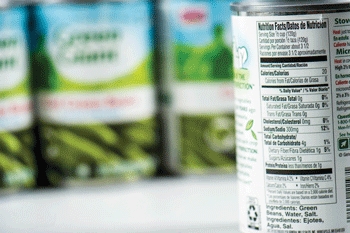 We are inundated with countless creative marketing efforts on packages with buzz words that appeal to our quest to make healthy purchases. Reading the ingredient label of a product is often ignored because of the packaging that suggests a healthy choice.
We are inundated with countless creative marketing efforts on packages with buzz words that appeal to our quest to make healthy purchases. Reading the ingredient label of a product is often ignored because of the packaging that suggests a healthy choice.
An article caught my eye that talked about how reading food labels can help you lose weight. That is a rather pronounced statement, but reading food labels can help with a better-informed decision for your purchase.
Food manufacturers are in competition to entice you to purchase their products with targeted marketing tactics. When packaging catches your attention, ignore the buzz words! A little investigation on the back tells you the real story.
I decided to look at some packaging claims and found that many were vague. Here are a few.
“Free Range” is applicable to chicken. I envisioned happy chickens outside pecking around! “Free Range “can be anything from an outside chicken or a chicken that is in an enclosure with windows open.
The wording “All Natural” means little and is not currently regulated by the FDA and can be misleading to consumers that think they are purchasing a healthy product.
“Sugar Free“ is captivating but does not mean that it contains less calories or is healthy.
“Real fruit juice” can be misleading because it may not say how much is real.
“Beef Flavor,” the word flavor in anything means that the product has been enhanced with spices to replicate a flavor in a product. Meat origins do not go in the category of flavor and are identified on the label.
“Vitamin C or D added” is another one that can be misleading to how much is added.
The word “Organic” has been regulated by the FDA and carries three levels of Organic criteria to qualify.
“Gluten Free” is a term that the FDA has regulated for grains.
You would need to be a certified nutritionist or dietician to fully understand the complexity of labeling and food ingredients, but reading a food label is relatively easy and a good summary of what is contained in the product you are purchasing.
I begin with the first line that reads the number of servings in the package and how many calories are per serving. As an example, if the package says 4 servings and each serving is 250 calories and you eat the entire package you have just consumed 1,000 calories.
Sodium is my next go to on the label line for amount in the product and is a key factor in health illness. The recommended allowance per day based on an industry standard 2,000-calorie diet is 2,500 to 3,000 mg. Fast food and sodas can easily mount to the recommendation.
The next items for review are carbohydrates and fat followed by sugar.
Trans Fat is a product you should try to avoid all together because it is used in product packaging to sustain the shelf life of food.
The bottom part of the label list includes the ingredients in descending order in relation to the amount in the product. Many ingredients can sometimes be an indication of how much was added, and many times the fewer the better.
Take the time to read the story behind the packaging — it can help you make informed food choices.

 How to resolve AdBlock issue?
How to resolve AdBlock issue? 








